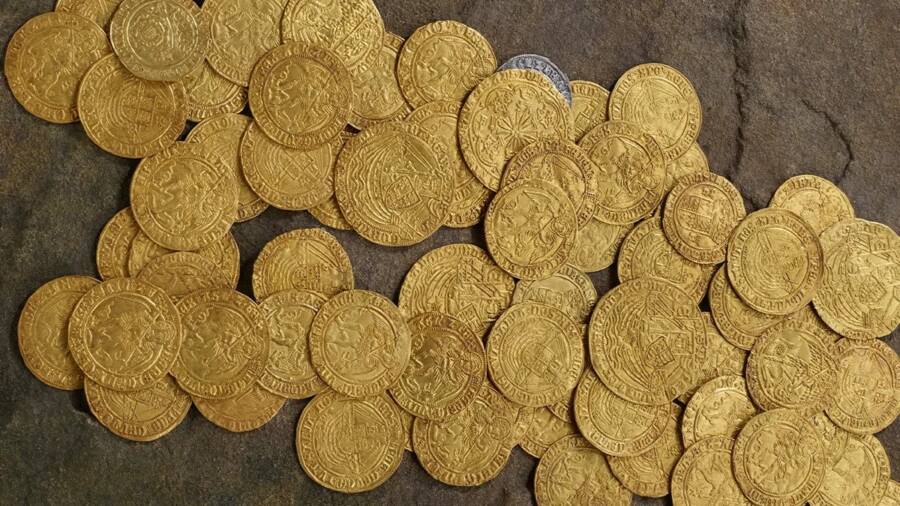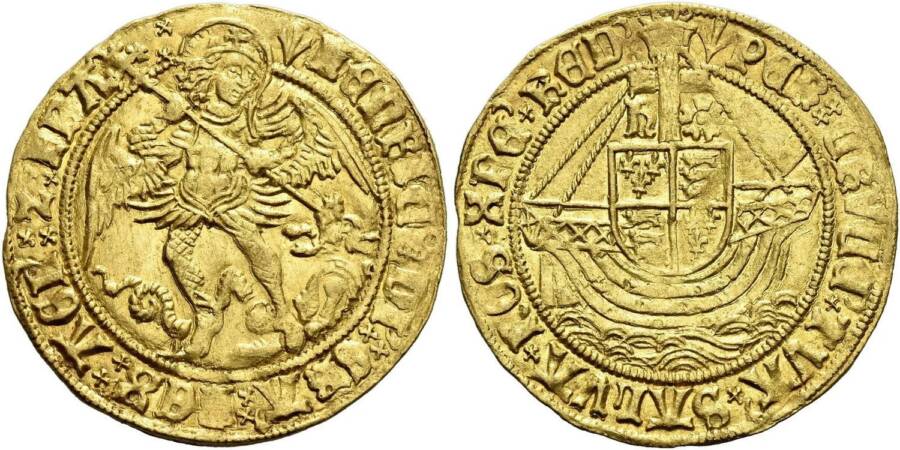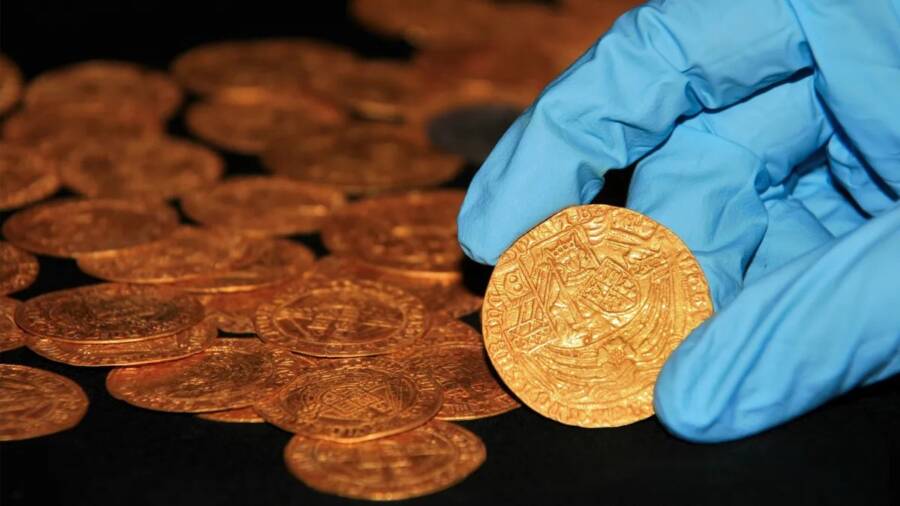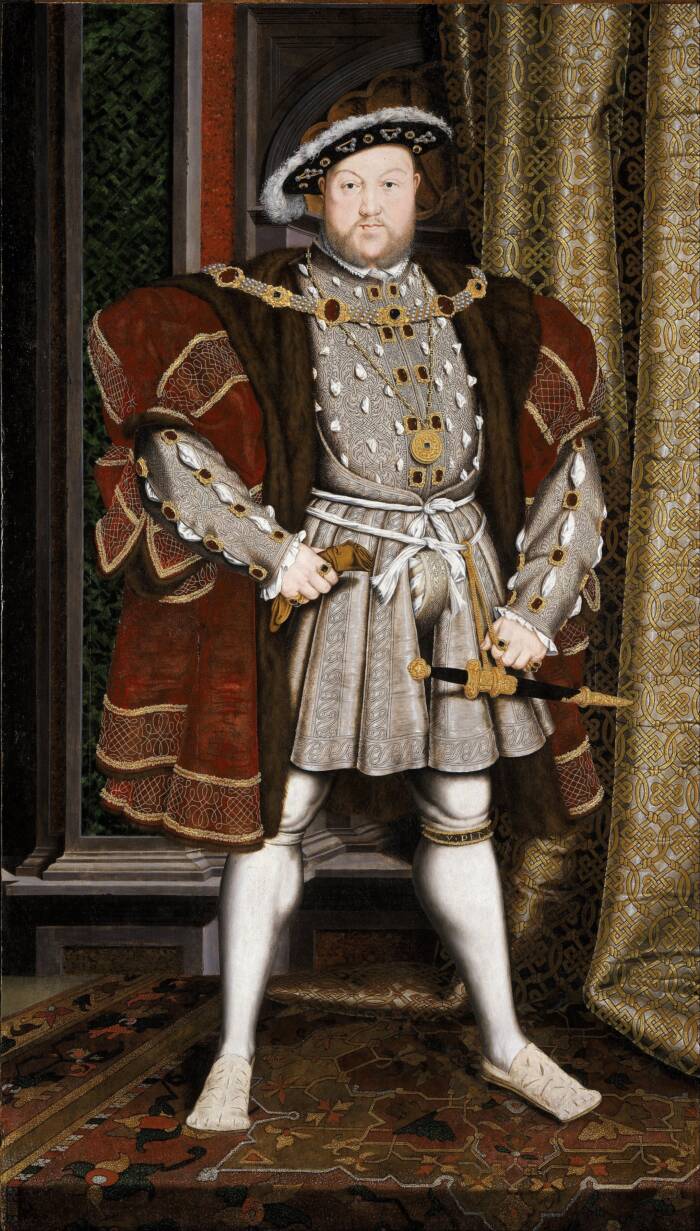While weeding their garden in the village of Milford on Sea, the couple stumbled upon "strange circular discs" — which turned out to be gold and silver coins from the reign of Henry VIII.

David Guest NumismaticsThe couple ultimately unearthed 70 coins from their backyard, and they’re now expected to sell at auction for $300,000.
In 2020, a couple in England was doing yard work when they discovered a number of “strange circular discs” by a fence. After washing the discs off with a hose, they realized that they’d actually found centuries-old gold coins.
The coins, which date from the 1420s to the late 1530s, were seemingly buried by someone during the tumultuous reign of King Henry VIII. They’re now set to go to auction, where they’re expected to sell for at least $300,000.
The Astonishing Discovery Of 70 Tudor-Era Coins In An English Couple’s Garden
The coin hoard, set to be auctioned by David Guest Numismatics in November 2025, was discovered in 2020 by a couple who chooses to remain anonymous while they were working in their garden in the village of Milford on Sea. In an interview with Fox News, Guest explained that the couple was adjusting a fence near some flower beds when something caught their eye.

David Guest NumismaticsThe front and back sides of one of the coins that was found by the couple.
At first glance, the couple noticed clumps of “clayey soil” covering what appeared to be thin discs. But when their teenage son washed off the discs, they realized that they’d found 69 gold coins and one silver coins, all of them dating back centuries.
The coins bear the likeness of four different kings — Henry VI, Edward IV, Henry VII, and Henry VIII — as well as two queens — Katherine of Aragon and Jane Seymour — and one cardinal. They were minted during the Tudor era, between the 1420s and the 1530s.
The coins were seemingly buried in the 1530s, at which time they would have been valued at 26 pounds, 5 shillings, and 5-1/2 pence. This would have been a small fortune at the time. As Guest told Fox News, the average property price in rural England during this era was 25 pounds.

Trustees of the British MuseumThe coins were worth a small fortune when they were buried in the 16th century.
But not only are the coins valuable, they’re also exceeding rare. In his auction listing, Guest explained that they stand as the “only complete and fully documented gold coin hoard from the early Tudor period to come to auction.” They’re expected to sell for $300,000, though Guest believes the final price may be much higher.
So why were the the coins buried in the 16th century? Their burial likely had something to do with Henry VIII and the English Reformation.
The Tumultuous Period Of English History In Which These Coins Were Minted
Though countries across Europe were beginning to question the authority of the Catholic Church as the Middle Ages ended, the English Reformation didn’t start until the reign of King Henry VIII. By the late 1520s, Henry had become increasingly convinced that his wife, Katherine of Aragon, would be unable to bear him a son. Divorce was prohibited in the Catholic Church, so Henry tried to convince the pope to annul his marriage, which he claimed was illegitimate.

Public DomainKing Henry VIII, the famous English monarch who reigned when most of the newly-found coins were minted.
The pope refused. And so, in 1532, Henry broke with the Catholic Church and helped create the Church of England, of which he became the head.
During the English Reformation that followed, Henry and his allies set out to disband the country’s monasteries and to seize the wealth of the Catholic Church. During this tumult, the newly-unearthed hoard of coins was buried in Hampshire.
While it’s impossible to know who buried the hoard, their reasons for burying the coins, or why they never retrieved their treasure, Guest suspects that the coins were buried because of the Reformation. Perhaps a monk or priest wanted to protect the wealth of his monastery or church.
Whoever buried the coins, they failed to retrieve them. Instead, the treasure laid forgotten in Hampshire as the world moved on — Henry would, infamously, marry five more times — and it would ultimately take centuries for the coins to once again see the light of day.
After reading about the Tudor-era coins that were found in a British couple’s backyard, discover the stories of Henry VIII’s children, each of whom played an important role in English history. Then, learn about Mary Boleyn, the sister of Anne Boleyn who was also one of Henry VIII’s mistresses.





